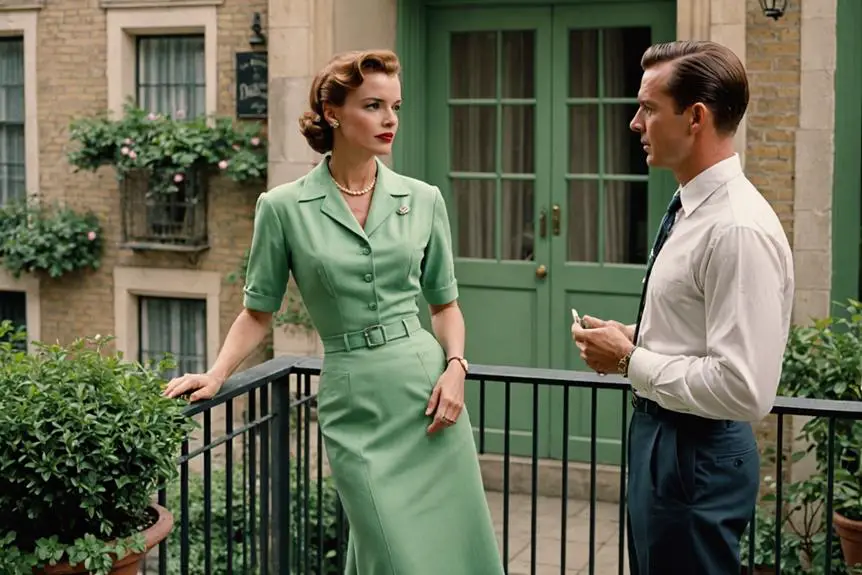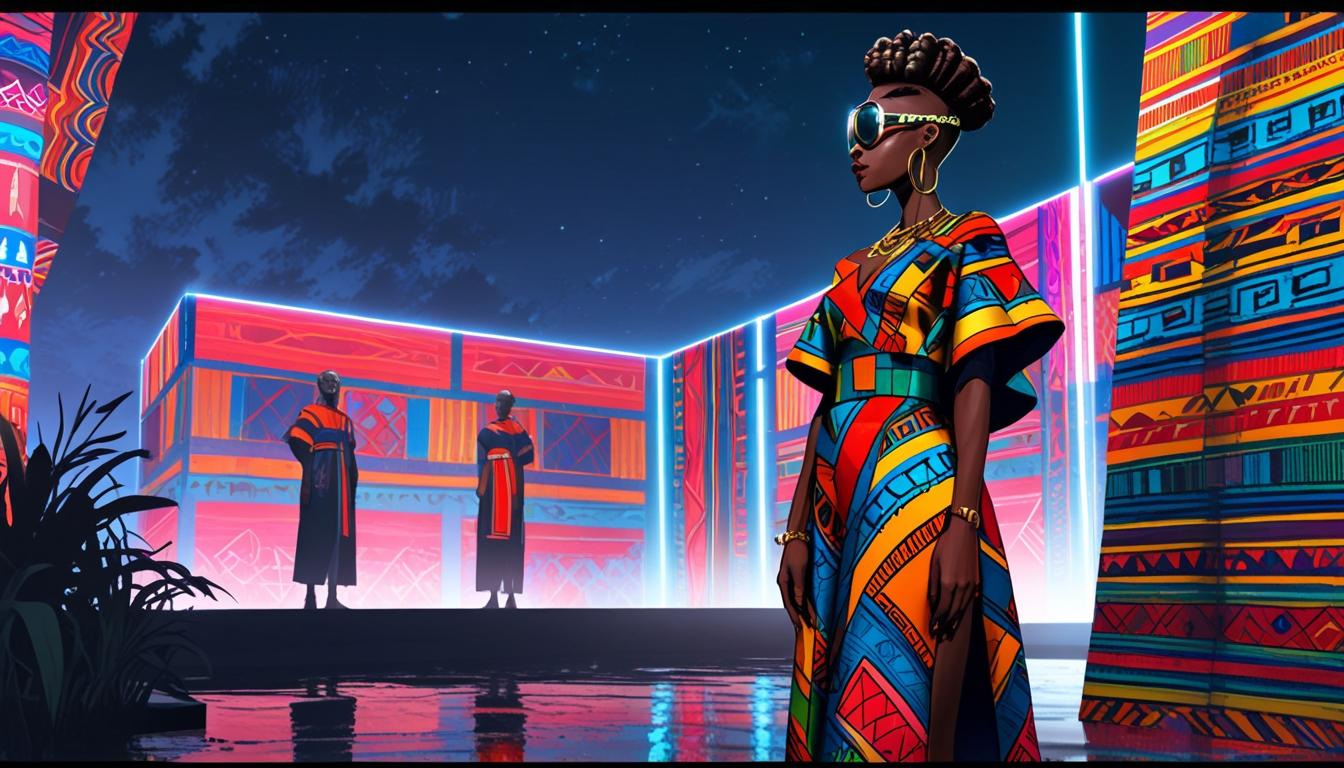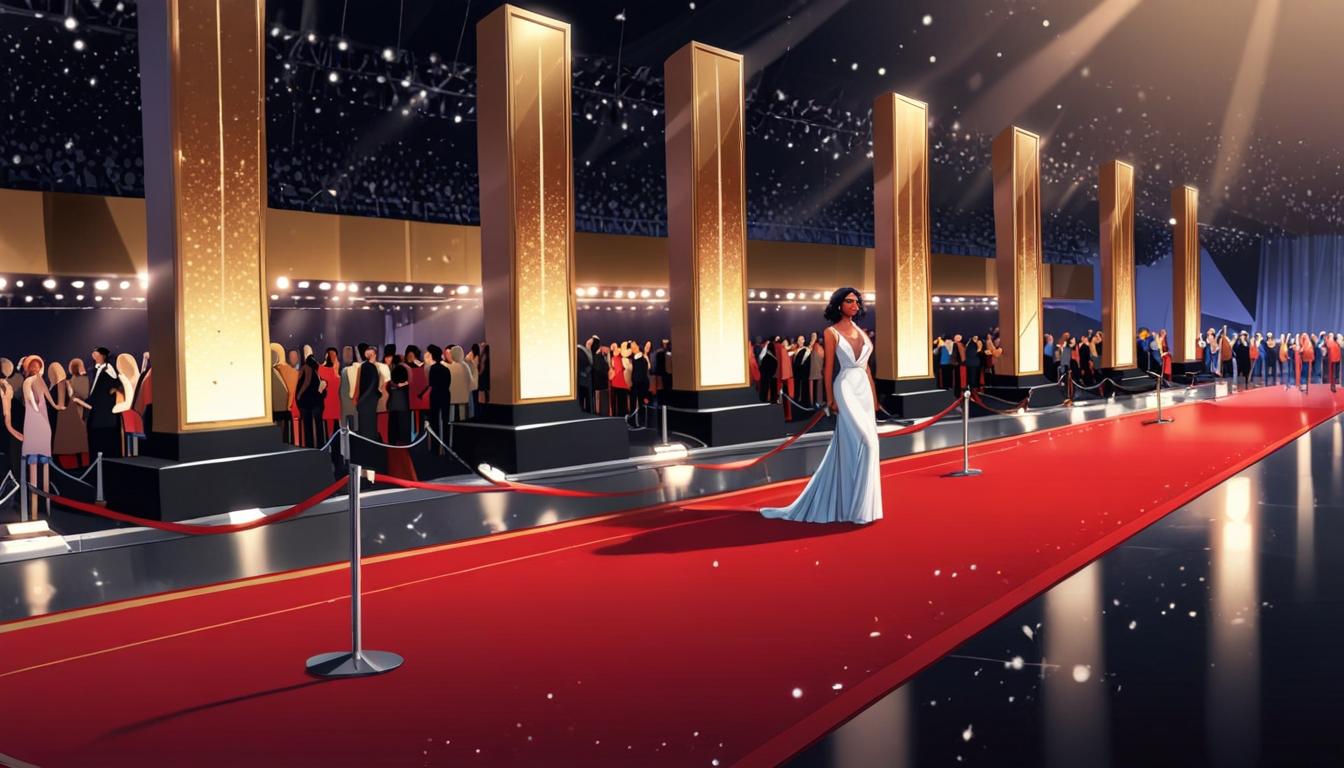Did you know that Edith Head, the legendary costume designer, won eight Academy Awards during her career, with her work in "Rear Window" often cited as a standout? The outfits in this classic film do more than just adorn the characters; they reveal deeper insights into their personalities and motivations. You might find yourself questioning how Lisa's glamorous wardrobe contrasts with Jeff's casual attire, and what that says about their relationship dynamics. As you consider these elements, you'll discover how fashion becomes an essential part of the storytelling in this iconic film.
Rear Window Film Synopsis
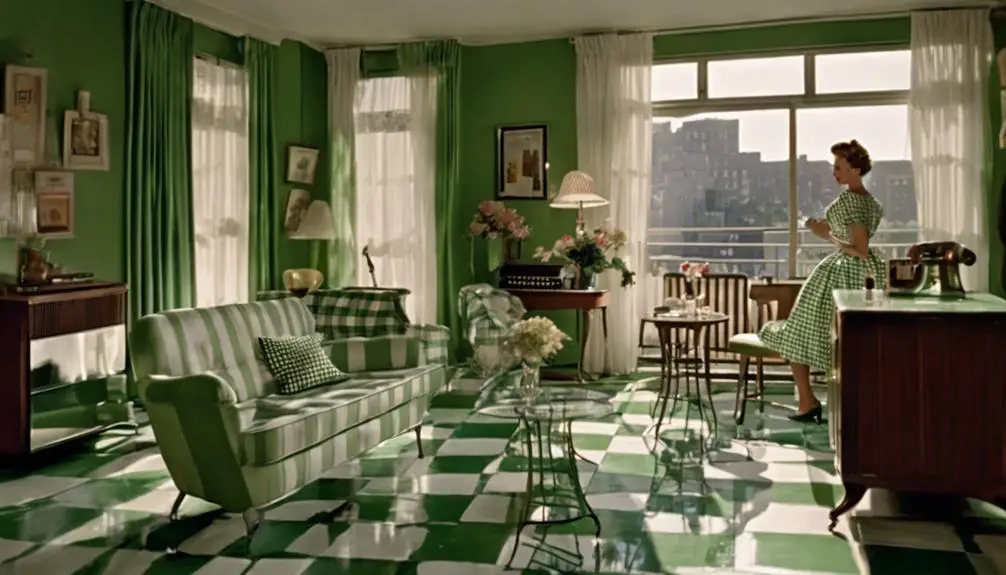
In "Rear Window," you step into the life of L.B. Jeffries, a wheelchair-bound photographer played by James Stewart. He's stuck in his apartment, observing his neighbors through the rear window. Sounds a bit creepy, right? But that's where the magic of voyeurism kicks in. As L.B. watches the daily dramas of his neighbors unfold, he starts getting suspicious about one guy who might've committed murder. Talk about a plot twist! This film also reflects the artistic choices of its time, much like how vintage fashion pieces carry their own unique stories and histories, revealing the evolution of brand identity.
The film, directed by Alfred Hitchcock and released in 1954, explores deeply into themes of isolation and perception versus reality. You're not just watching a movie; you're experiencing the tension that builds with every glance L.B. takes. Isn't it fascinating how much you can learn about people just by watching them? And let's not forget Lisa Carol Fremont, portrayed by the elegant Grace Kelly. She's not just a pretty face; she plays a significant role in this suspenseful journey.
Now, you might wonder how it all looks. Well, costume designer Edith Head worked her magic, making sure that Grace Kelly's outfits perfectly highlighted her sophistication. Those outfits became iconic in film history! Hitchcock's unique storytelling, focusing on visuals and character dynamics instead of heavy dialogue, makes "Rear Window" a true classic. So, as you engage with this thrilling narrative, keep your eyes peeled—there's a lot more than meets the eye!
Iconic Grace Kelly Outfits
Grace Kelly's outfits in "Rear Window" are not just costumes; they're a reflection of her character's sophistication and allure. Designed by the legendary Edith Head, each piece showcases the elegance that Kelly embodies. Remember that stunning white suit? It's a perfect example of the New Look style, with its fitted bodice and full skirt that flows beautifully. When she walks in, you can't help but be captivated!
One of her standout looks is that monochromatic dress with a full white circle skirt and an off-the-shoulder top. Those floral embellishments? They scream 1950s chic! Then comes the pistachio-colored suit, paired with a white halter top and a chic pillbox hat. Talk about polished! It's like she stepped out of a fashion magazine.
You can't forget the little black dress, either. It's fitted and features a classic circle skirt, accessorized with a single strand of pearls. This outfit is timeless and shows how effortlessly classy she is. And just when you think it can't get better, she finishes the film in a stunning white embroidered gown with gold flowers. Who knew she could rock a casual red button-up shirt and blue jeans while still looking sophisticated?
Costume Design Significance
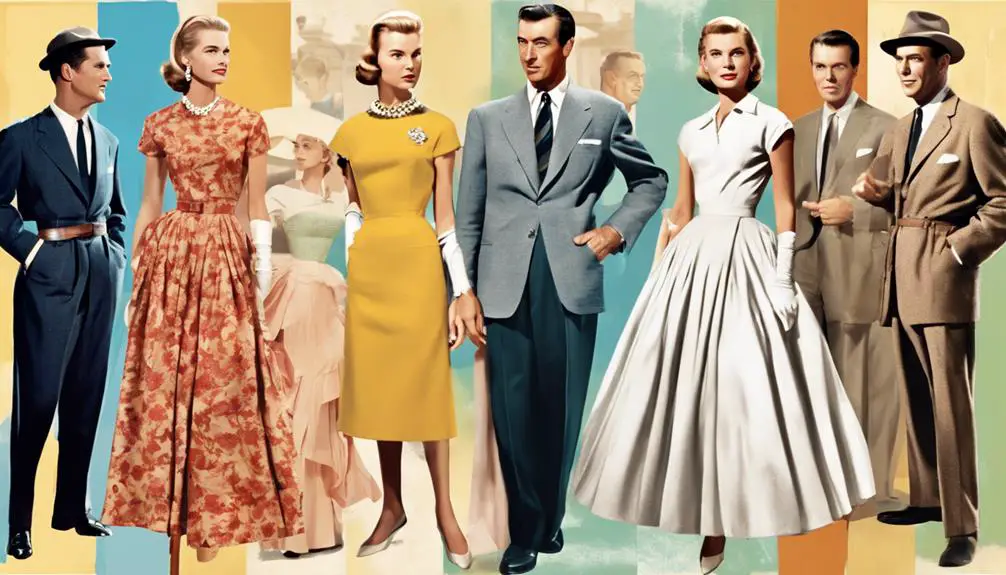
Costume design plays an important role in storytelling, particularly in "Rear Window," where Edith Head's creations go beyond mere aesthetics to encapsulate the essence of the characters. You can't help but notice how Grace Kelly's outfits, like that stunning black silk organza dress, define her character, Lisa. These costumes aren't just pretty clothes; they visually represent her emotional journey and aspirations. Isn't it fascinating how a simple outfit can say so much?
Every piece of clothing in the film enhances character identity. Lisa's sophisticated style contrasts sharply with Jeff's laid-back attire, highlighting their different perspectives on life and love. It's like a game of dress-up that tells the audience who these people are without uttering a word. The way color and fabric are used also ties in perfectly with the film themes of voyeurism and perception. You see, fashion is more than just what you wear; it's part of the visual language that communicates deeper meanings.
Edith Head's innovative designs continue to inspire fashion today, proving that her work has a lasting impact on how we portray style and character development in films. So, next time you watch "Rear Window," pay close attention to the costumes. They're not just there for decoration; they're vital to the story, guiding you through the characters' emotional ups and downs. Isn't it cool how costume design can shape our understanding of a film?
Fashion's Role in Storytelling
Fashion often shapes narratives in powerful ways, and "Rear Window" is a prime example of this. In this classic film, Edith Head's brilliant costume design isn't just about looking good; it's a key part of the storytelling. Each outfit tells a story about the characters' emotions and social dynamics, especially when it comes to Lisa and Jeff. You can really see how Lisa's wardrobe, like that stunning pistachio-green suit, reflects her romantic aspirations and her desire for independence.
Isn't it fascinating how fashion serves as a narrative device? Lisa's glamorous outfits contrast sharply with Jeff's laid-back pajama sets, emphasizing their different views on life and love. While he's stuck in his apartment, she's out there living life to the fullest! Each outfit not only defines who they are but also heightens the suspense and emotional engagement of the movie.
Think about it: Lisa's chic evening gown isn't just pretty; it symbolizes her hopes for a deeper connection with Jeff. The colors and styles she wears reveal her journey, making us root for her even more. So, the next time you watch "Rear Window," pay attention to the fashion. It's not just clothing; it's a powerful storytelling tool that enhances the plot and draws you into the characters' world. Isn't it amazing how a simple dress can hold so much meaning? Fashion really does play an essential role in storytelling!
Personal Outfit Recreation Tips
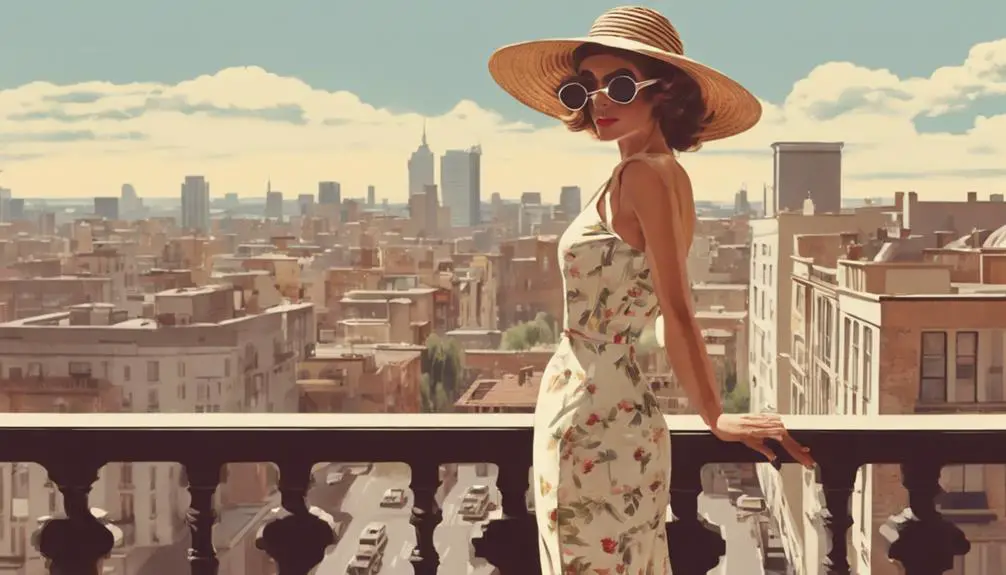
Recreating iconic looks from classic films can be a fun and rewarding experience, especially when it comes to the timeless elegance seen in "Rear Window." Start by focusing on fitted silhouettes that accentuate your waist, paired with flowing skirts to capture that quintessential 1950s style. Think of Grace Kelly, who effortlessly rocked that vintage elegance!
For your outfit, consider a classic white suit, complete with a nipped-in waist and a flowing circle skirt. This combo not only looks stunning but also reflects the glamour of the era. Don't forget the power of fabric—opt for luxurious silk or organza to really channel that high-class vibe.
Accessories are a must! A classic pearl necklace can add sophistication to your look, just like Grace. And hey, a pop of red lipstick? That'll really tie everything together and give you that polished finish.
Feeling adventurous? Look for off-the-shoulder designs or stick to a monochromatic color palette to achieve that authentic retro vibe. And let's talk footwear—vintage-inspired t-strap heels or elegant flats will complete your ensemble perfectly and keep you stylish from head to toe.
Frequently Asked Questions
Who Designed Grace Kelly's Clothes?
Edith Head designed Grace Kelly's clothes, showcasing her costume design expertise. Their collaboration created iconic looks that influenced fashion impact and vintage aesthetics, embodying character symbolism and style evolution, essential for wardrobe analysis in film history.
What Is Hitchcock's Message in the Rear Window?
Hitchcock's symbolism reveals voyeurism themes, showcasing character relationships amidst urban isolation. His suspense techniques expose moral dilemmas, prompting you to question your own perspective on judgment and the ethics of observing others without consent.
Was Rear Window Based on a True Story?
"Rear Window" isn't based on a true story, but it draws true crime inspiration. Its voyeurism themes, psychological tension, urban isolation, and character motivations create a cultural impact, enhanced by innovative filming techniques.
What Is so Special About Rear Window?
"Rear Window" really resonates with its riveting film aesthetics, showcasing suspense techniques and visual storytelling. You'll appreciate the character analysis and voyeurism themes within its urban setting, creating psychological tension that captivates and challenges viewers.
